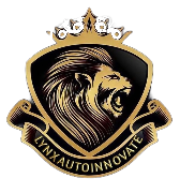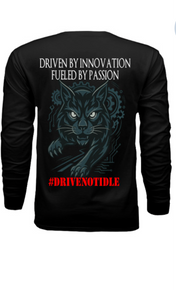Your engine creates power, and your transmission manages it — but it’s the drivetrain and differential that actually get that power to the wheels. These systems are the unsung heroes of motion, converting controlled energy into forward movement while keeping traction balanced and performance smooth. Without them, even the most powerful engine would just rev aimlessly. Let’s dive into what really happens underneath when you hit the gas.
1. What Is the Drivetrain?
The drivetrain includes every component that transfers power from the transmission to the wheels. Depending on the vehicle type, this setup can vary — but the purpose is always the same: to move the car efficiently and safely.
Main Drivetrain Components:
- Driveshaft: A rotating tube that carries power from the transmission to the differential.
- Axles: Transfer torque from the differential to the wheels.
- CV Joints & U-Joints: Flexible joints that allow smooth power transfer, even as the suspension moves.
- Differential: Splits torque between wheels and allows them to rotate at different speeds during turns.
2. Drivetrain Configurations
Each drivetrain layout affects how a vehicle handles, accelerates, and grips the road.
Front-Wheel Drive (FWD)
Power goes from the transmission to the front wheels only.
Compact, lightweight, and fuel-efficient.
Common in most sedans and compact cars.
Pros:
- Better traction in wet or snowy conditions.
- Cheaper to manufacture and maintain.
Cons:
- Less balanced weight distribution.
- Limited performance potential due to torque steer (pulling during acceleration).
Rear-Wheel Drive (RWD)
Power is sent to the rear wheels, leaving the front wheels to steer. Found in trucks, SUVs, and performance vehicles.
Pros:
- Excellent handling balance and weight distribution.
- Ideal for towing or sporty driving.
Cons:
- Reduced traction in slippery conditions.
- More drivetrain components, meaning higher maintenance potential.
All-Wheel Drive (AWD)
Power is automatically distributed to all four wheels as needed. Great for everyday driving in mixed conditions.
Pros:
- Enhanced stability and traction.
- Automatically adjusts to road conditions.
Cons:
- Adds weight and complexity.
- More expensive to maintain and repair.
Four-Wheel Drive (4WD)
Designed for off-road and rugged terrain.
Can switch between 2WD and 4WD modes.
Pros:
- Superior off-road capability and durability.
- Handles mud, rocks, and uneven terrain easily.
Cons:
- Lower fuel efficiency.
- Extra maintenance for transfer cases and locking differentials.
3. The Differential: The Cornering Genius
When you take a turn, the outside wheel travels a longer path than the inside wheel — meaning they need to spin at different speeds. That’s where the differential comes in. It allows both drive wheels to rotate at different speeds while still receiving power. Without it, tires would drag and skip during turns.
Main Types of Differentials:
Open Differential
- Most common in standard cars.
- Splits torque evenly between wheels.
- If one wheel slips, power goes to that wheel (reducing traction).
Limited-Slip Differential (LSD)
- Distributes power to the wheel with more grip.
- Ideal for performance or off-road vehicles.
- Uses clutches or gears to limit slippage.
Locking Differential
- “Locks” both wheels together to spin at the same speed.
- Essential for off-road and heavy-duty use.
- Manually or electronically activated.
Torque Vectoring Differential
- High-tech version using sensors and actuators.
- Sends precise amounts of torque to each wheel for improved cornering.
- Common in modern performance cars and AWD systems.
4. Transfer Case (for AWD/4WD Systems)
The transfer case is the powerhouse that splits torque between the front and rear axles.
Key Functions:
- Engages or disengages 4WD mode.
- Syncs power distribution to all four wheels.
- Houses gears or chains that handle extreme torque loads.
Common Issues:
- Leaking fluid or burnt smell.
- Difficulty switching between drive modes.
- Grinding or whining noises under load.
5. Common Drivetrain Problems & Symptoms
| Symptoms | Possible cause |
| Vibrations while driving | Worn U-joints or driveshaft imbalance |
| Clunking when shifting gears | Worn differential mounts or gears |
| Whining noise during acceleration | Failing differential bearings |
| Clicking when turning | Damaged CV joints |
| Loss of traction |
Worn LSD or slipping differential |
6. Drivetrain Maintenance Tips
- Change differential and transfer case fluids every 30,000–60,000 miles.
- Inspect U-joints and CV boots for cracks or grease leaks.
- Keep an eye out for vibration or whining sounds — early signs of drivetrain wear.
- Avoid aggressive takeoffs on slippery surfaces to prevent shock loads on the drivetrain.
💡 Pro Tip: If you ever hear a rhythmic clunk or feel a vibration that gets faster with speed, check the driveshaft and U-joints immediately — catching it early prevents major damage.
7. Performance & Technology Advances
- Active AWD Systems: Distribute torque intelligently for grip and handling.
- Electronically Controlled LSDs: Adjust power delivery on the fly for cornering precision.
- Carbon-Fiber Driveshafts: Lightweight, reducing rotational mass for faster acceleration.
- Electric Drivetrains: Replace the mechanical differential entirely with dual-motor setups that electronically control wheel speed.

















